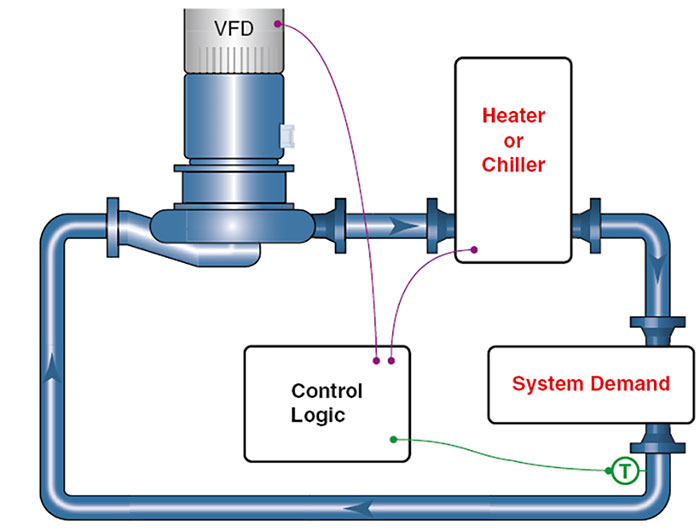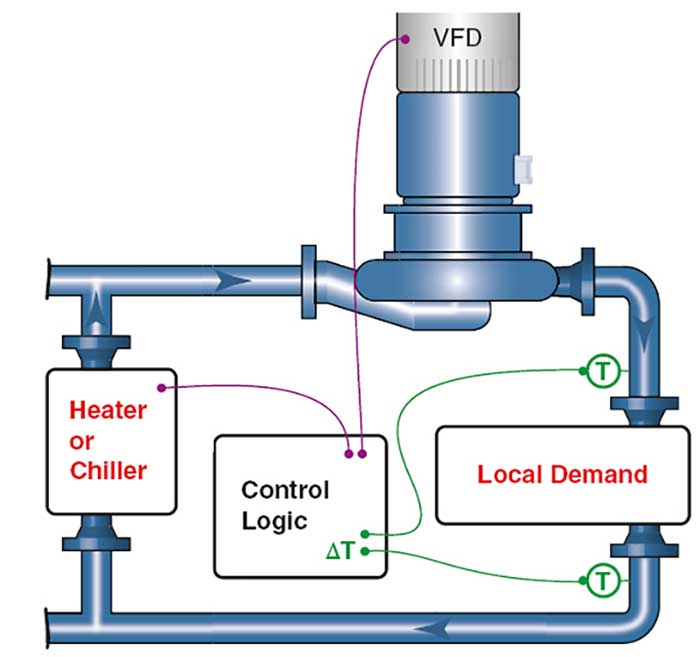Q: How can a single variable speed pump be used to control temperature in an HVAC system?
 Image 2. Temperature control (Images courtesy of Hydraulic Institute)
Image 2. Temperature control (Images courtesy of Hydraulic Institute)A: In HVAC systems, there is an opportunity to vary the flow based on heating/cooling demand. The pumping system is designed to supply flow and pressure at the highest system demand. Without control, the pump operates at full speed.
This can waste energy and cause wear on itself and other system components.
Operating at full speed when not required creates an artificial demand for cooling in chilled water systems due to higher developed head and flow through the distribution system. Image 2 shows that a temperature input from downstream of a heating/cooling load can be used to slow the pump to the minimum flow required to satisfy the system downstream temperature requirements.
 Image 3. Differential temperature control
Image 3. Differential temperature controlIn the case of a variable or staged heating boiler or chiller system, a controller is used to optimize the heating/cooling equipment and the pump flow so the minimum total energy is used to meet the system demand at the heat exchanger.
As illustrated in Image 3, differential temperature can also be used to control the speed of a pump to deliver the flow rate that will maintain a set point differential temperature across a load. This control requires two temperature sensors.
For more information on controlling pumps, refer to Application Guideline for Variable Speed Pumping at www.pumps.org.


